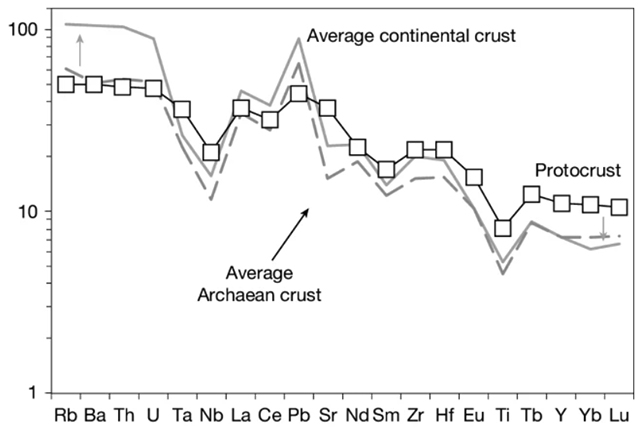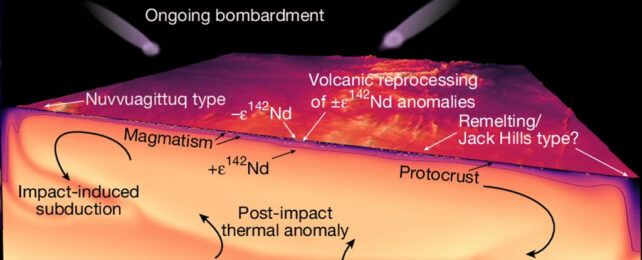Geologists have made certain assumptions about how the crust making up our planet's earliest surface formed, but a new study has found that Earth's very first protocrust was surprisingly similar to the shell of solid rock in place today.
It may mean a complete rethink of how Earth's coat transitioned from a skin of boiling magma to the shifting armor of tectonic plates we now live on, according to the international team of researchers behind the study.
"Scientists have long thought that tectonic plates needed to dive beneath each other to create the chemical fingerprint we see in continents," says geochemist Simon Turner, from Macquarie University in Australia.
"Our research shows this fingerprint existed in Earth's very first crust, the protocrust – meaning those theories need to be reconsidered."

The chemical fingerprint Turner and his colleagues were looking for was a lack of the element niobium. This is one way of identifying rocks at subduction zones, where one plate slides under another – it's thought that the magma forming these rocks loses niobium as the element gets trapped further down.
Find the first evidence of low levels of niobium in the geological record, it was thought, and you find the point when continental plates first appeared and started slamming into each other. However, this hypothesis of a differing early crust composition has been called into question before.
Here the researchers took a fresh approach. They used mathematical models to figure out the composition of Earth's earliest covering of hard rock, some 4 to 4.5 billion years ago (the Hadean eon). The modeling showed that niobium would be attracted to Earth's core, with no plate tectonics required.
It means continental crust formation may have been a part of the original process of layer formation on Earth, not something that came after. The idea is backed up by the behavior of other siderophile elements in the model – elements attracted to iron, such as the iron in Earth's core as it took shape.
"I realized there might be a connection between early core formation, high siderophile element patterns, and the infamous negative niobium anomaly observed in continental crust," says Turner.
In the many millennia since, it seems continental crust has retained that original chemical signature, less affected by the heavy bombardment of meteorites that changed the composition of Earth's mantle, and ended around 3.8 billion years ago.
All of this needs further investigation, of course, but it's an intriguing alternative take on how Earth first became the planet we recognize today, and how that might apply to other planets. It also answers some of the most baffling questions in geological history.
"This discovery completely changes our understanding of Earth's earliest geological processes," says Turner.
"It also gives us a new way to think about how continents might form on other rocky planets across the Universe."
The research has been published in Nature.
